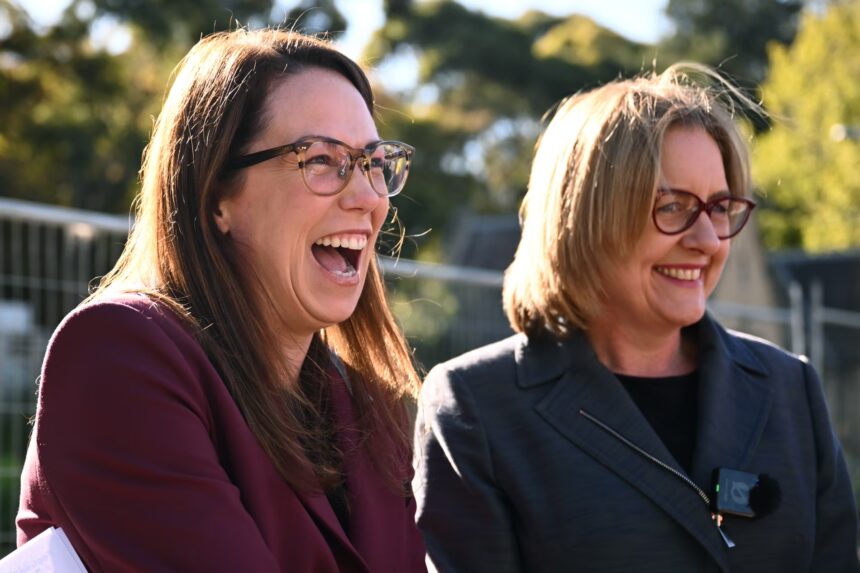Labor prioritises cost-of-living over larger surplus
The Victorian Labor government has chosen to sacrifice a larger budget surplus in favor of delivering meaningful cost-of-living relief to residents across the state. In the lead-up to the budget announcement, Treasurer Jaclyn Symes revealed that the 2025–26 operating surplus will be $600 million, marking Victoria’s first budget surplus since the pandemic. This figure is $1 billion less than forecasted in the December mid-year update.
Intentional choice to back the community
Symes emphasized that the decision was intentional and reflects the government’s commitment to backing the community during challenging economic times. “We could have elected to have a larger surplus for tomorrow’s budget. But what we did is choose to back Victorians,” Symes declared during a media address. The Labor government is opting to support residents by funding critical services and launching new cost-of-living initiatives rather than banking a larger surplus.
Investing in essential services
“We know that cost of living, frontline services – these are the priorities that Victorians expect a Labor government to get behind. So we are investing in health, mental health, education, transport – all of the things that Victorians want,” she continued.
Practical help over political optics
While some critics may highlight potential cuts lurking beneath the feel-good policies, the Treasurer reiterated her government’s core focus: delivering practical support where it’s most needed, not just accounting milestones. “We also are offering practical cost-of-living measures, as well as delivering a surplus, which is what we promised to do in 2020.”
Budget includes public transport relief
The Victoria budget cost-of-living relief measures include free public transport for under-18s and weekend travel exemptions for seniors, both of which had been previously announced. Symes also hinted at additional relief measures that are yet to be detailed, making it clear that the budget is shaped by real-time community needs over rigid fiscal targets.
Surpluses projected in coming years
Symes projected the state will also post operating surpluses of $1.9 billion in 2026–27 and $2.4 billion in 2027–28. These updated projections represent an improvement from the $1.7 billion and $2 billion figures shared in December. This signals a longer-term trend of fiscal recovery, despite short-term trade-offs.
Debt expected to peak before easing
In addressing Victoria’s net debt trajectory, Symes confirmed it is expected to peak in 2026–27 before tapering down. However, she stopped short of disclosing a definitive number. In the last available forecast, debt was expected to hit $168.5 billion this financial year and grow to $187.3 billion by 2027–28.
Budget will reveal final debt figures
When pressed for clarity, Symes offered a cryptic assurance: “The [net debt] aggregates will be revealed tomorrow. They will not start with a two.” This suggests the total will remain below the $200 billion threshold.
Structural reforms aim to rein in spending
The upcoming budget also reflects structural reforms aimed at restoring spending discipline. Symes explained that a major part of this discipline involves reducing infrastructure investment to pre-pandemic levels and shrinking the public sector workforce. These moves align with preliminary findings from a review of the Victorian Public Sector (VPS) led by Helen Silver, former secretary of the Department of Premier and Cabinet.
Empathy in handling public sector cuts
“We are anticipating [a] several thousand reduction in VPS staff,” Symes said, acknowledging the human toll such changes can have. “We will undertake an empathetic response to the fact that there will be people who will no longer have a role in the public sector.”
Role reductions to follow consultations
The Treasurer clarified that specific roles to be cut would not be detailed immediately, citing a commitment to hold consultations with department heads first. Silver’s final report, due in June, is expected to make recommendations about streamlining the number of government-run entities, a move Symes supports. “We have more entities than I think we need. Helen agrees,” she noted.
No new taxes welcomed by business
In a move welcomed by business groups, Symes also ruled out any new or increased taxes in the budget. This comes after consultation with industry leaders, who made it clear they wanted tax stability. “The message I heard loud and clear from the business sector … was no more taxes,” Symes stated. “I can confirm in tomorrow’s budget there will be no new taxes … I have not changed any of the tax settings for tomorrow’s budget.”
Budget balances short-term relief and long-term repair
This decision reinforces Labor’s message that while the Victoria budget cost-of-living relief measures come at a short-term cost to the bottom line, they are carefully balanced with a longer-term strategy to restore financial stability. The government is signaling it can walk and chew gum—investing in people while maintaining a path to budget repair.
Full budget will reveal the government’s balance
With the full budget set to be unveiled imminently, Victorians will soon see the full scope of measures aimed at easing financial pressure while laying the foundation for a more sustainable public sector. The government’s balancing act—choosing compassion over cold surpluses—will now be tested in the months and years ahead.






